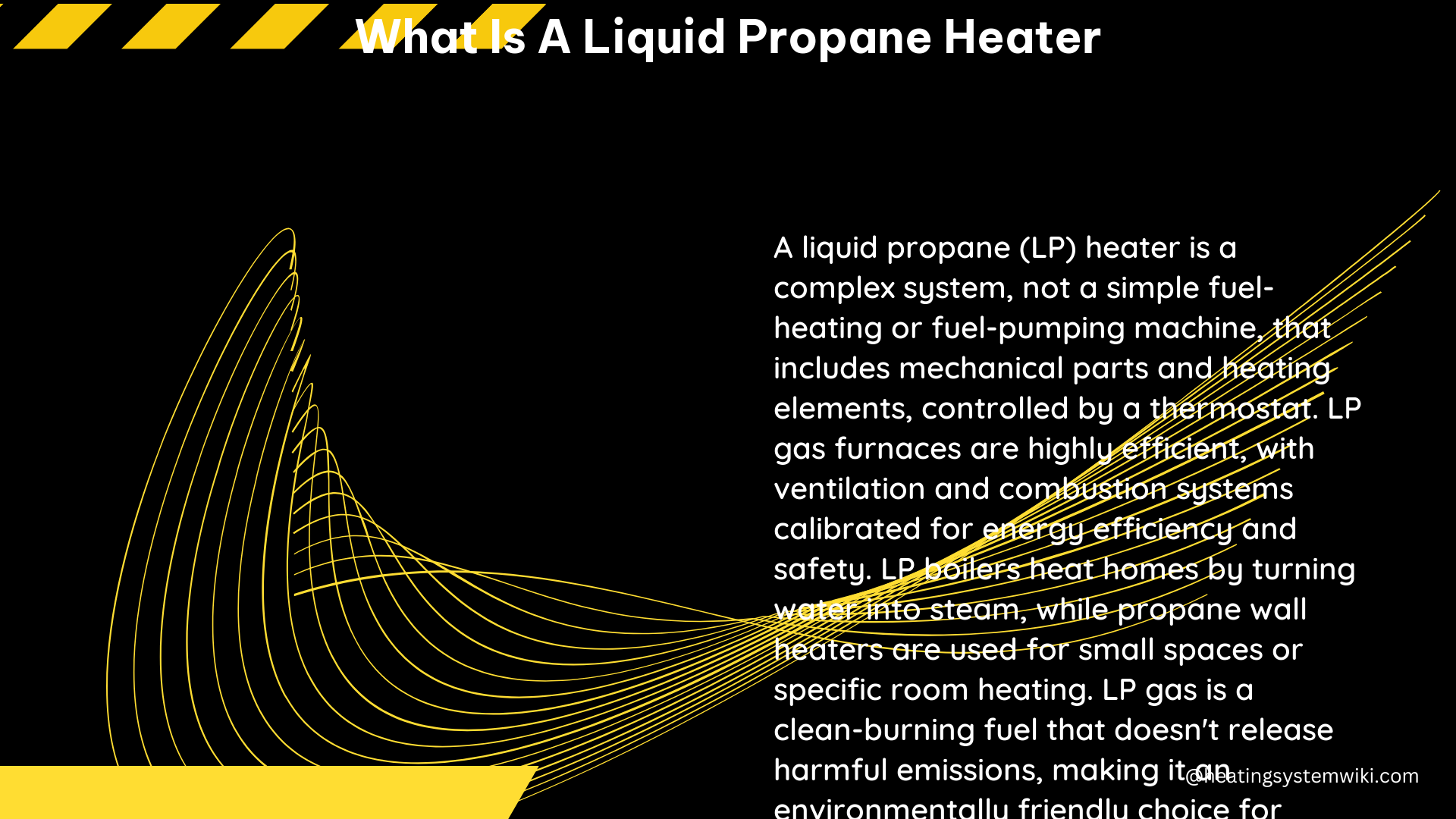A liquid propane (LP) heater is a heating device that utilizes liquefied petroleum gas (LPG) as its primary fuel source. These heaters are known for their clean-burning properties, environmental friendliness, and versatility in various heating applications, including homes, commercial spaces, grills, and more. Liquid propane is a popular choice for heating due to its portability, availability, and efficient combustion characteristics.
Liquid Propane Heater Specifications
When it comes to the technical specifications of liquid propane heaters, there is a wide range of variations depending on the specific model and intended application. However, some common features and specifications include:
Fuel Type
Liquid propane (LP) is the primary fuel source for these heaters. Propane is a liquefied petroleum gas that is stored under pressure and vaporizes when released, providing a clean-burning and efficient heat source.
Heating Capacity
Liquid propane heaters can range in heating capacity from small, portable units with a few thousand BTUs (British Thermal Units) to large, industrial-grade heaters with hundreds of thousands of BTUs. The heating capacity is a crucial factor in determining the appropriate heater size for a given space.
| Heater Type | Heating Capacity (BTUs) |
|---|---|
| Small, Portable | 5,000 – 30,000 BTU/hr |
| Medium, Standalone | 30,000 – 80,000 BTU/hr |
| Large, Industrial | 80,000 – 500,000 BTU/hr |
Efficiency
Liquid propane heaters can achieve impressive efficiency ratings, ranging from 80% to 99% depending on the model and application. High-efficiency models are designed to maximize heat output while minimizing fuel consumption and emissions.
Ignition System
Most liquid propane heaters utilize an electronic ignition system, which provides a reliable and convenient way to ignite the burner. Some models, however, may still use a traditional pilot light ignition system.
Safety Features
Liquid propane heaters often incorporate various safety features to ensure safe operation, such as:
– Automatic shut-off: Automatically turns off the heater in the event of tipping, low oxygen levels, or other safety concerns.
– Tip-over protection: Shuts off the heater if it is accidentally knocked over or tilted beyond a certain angle.
– Oxygen depletion sensors: Detects when oxygen levels in the surrounding environment drop below a safe threshold and shuts off the heater.
Installation and Maintenance Considerations

When it comes to the installation and maintenance of liquid propane heaters, there are several important factors to consider:
Ventilation
Proper ventilation is crucial for the safe operation of liquid propane heaters. The heater should be installed in a well-ventilated area to prevent the buildup of carbon monoxide, a colorless and odorless gas that can be hazardous in high concentrations.
Level Surface
Liquid propane heaters should be placed on a level surface to prevent tipping and ensure stable operation. Uneven or sloped surfaces can compromise the heater’s safety and performance.
LP Gas Supply
Regularly checking the LP gas supply is essential to ensure there are no leaks or other issues. Proper maintenance of the gas lines, connections, and regulators is necessary to maintain safe and efficient operation.
Professional Servicing
It is recommended to have liquid propane heaters serviced by a qualified technician on a regular basis. This ensures that the heater is operating safely, efficiently, and in compliance with any applicable regulations or manufacturer’s recommendations.
